Memorial Vicente García una casa llena de historias
Hello, traveling #community!
Today I am going to introduce you to a beautiful house. I am referring to the former house of General mmabí Vicente García.
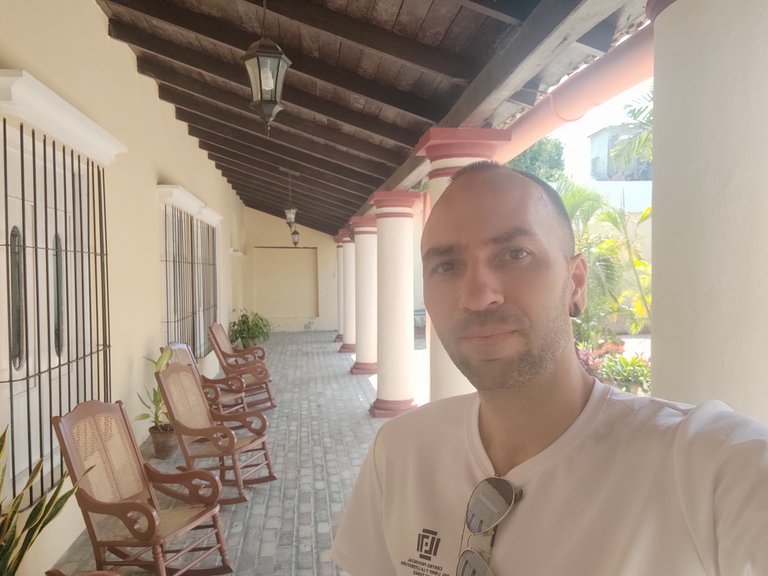
Unfortunately we will not be able to show you the entire house, as the exhibition rooms are closed for curatorship. I will send you that at another time.
However, we are going to start the visit here: from the front.
From the first moment we see this plaque, made of clay from the province. Las tunas is unknown as the province of cultures due to the quality of the clay with which the pottery is made, which distinguishes local artists.
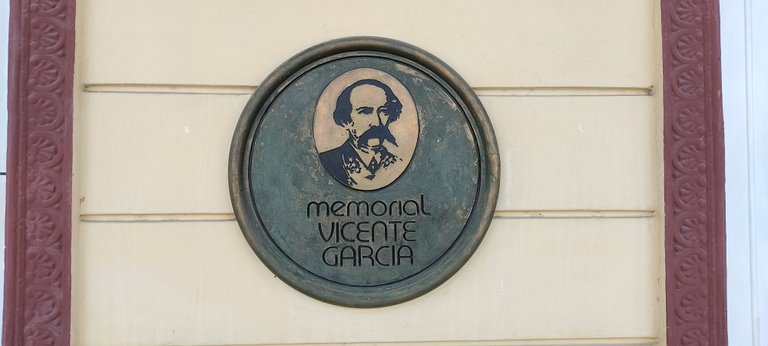
That is why it was decided to make the plaques with this material and give it a vintage look.
This Memorial was declared a national monument by the Ministry of Culture; which was very good for it since until then it was in a very poor state of conservation. In fact, it was closed for many years because during an inspection by the fire department it was determined that, if a fire was started, the entire Memorial would burn in less than 5 minutes.
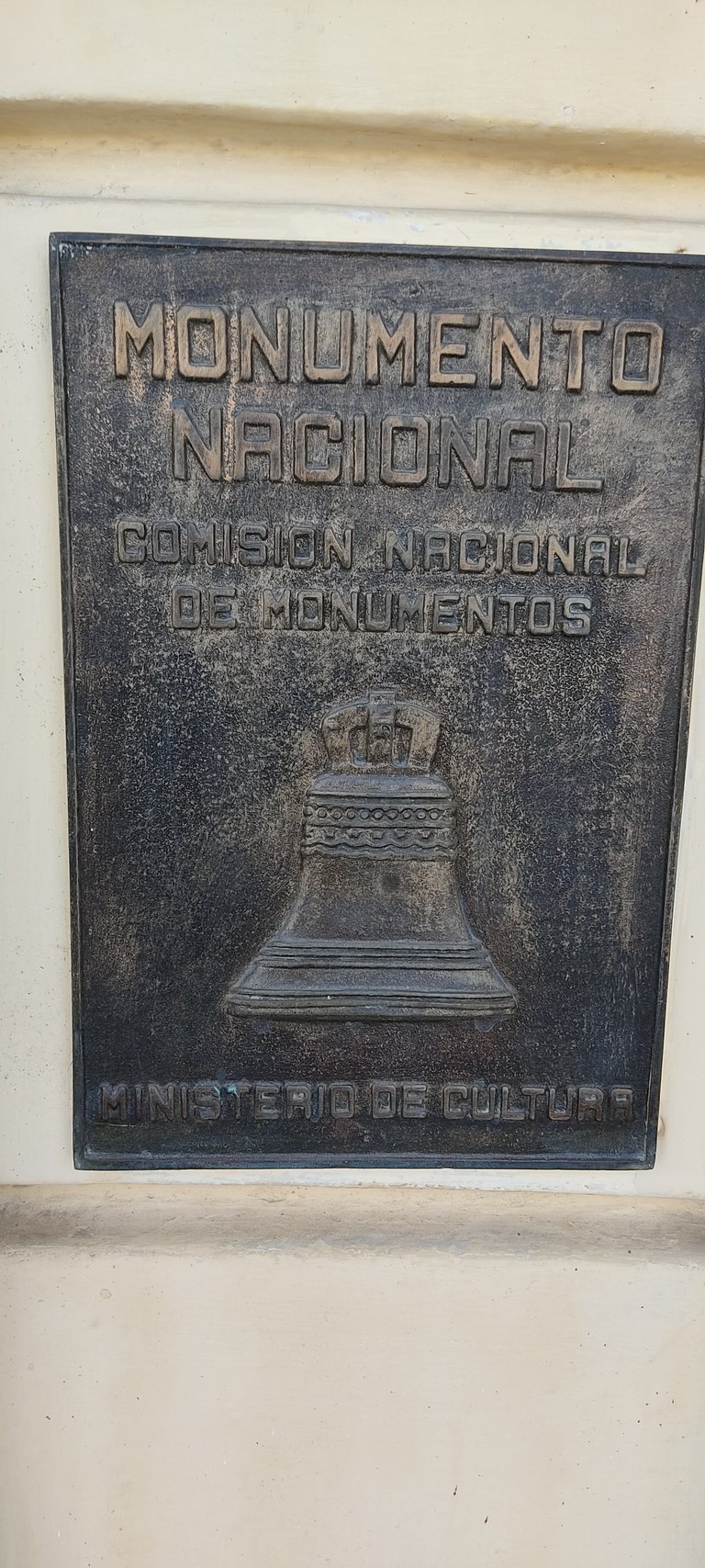
This Memorial has been part of several events of national importance, such as this one that shows the plaque located on the outside wall.
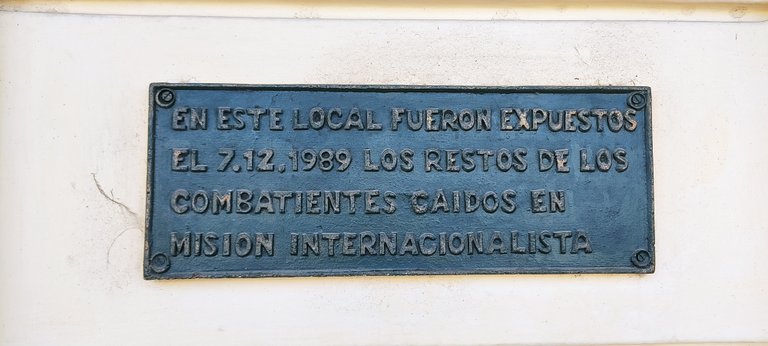
So these images that I am going to show you are those of a Memorial that has already been completely repaired. Of course, historians, restorers and specialists were always involved in maintaining the highest degree of originality in the house, both in design and in the parts that could be preserved.
In the first room we can see a bust with the image of General Vicente García.
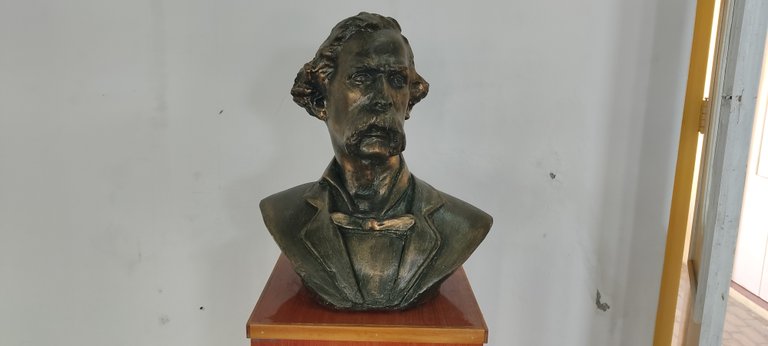
On the left wall we find the sculpture of a column of smoke and fire, with the sign that says: Burned before being a slave.
Why does this phrase need to be placed in the first room and at that size?
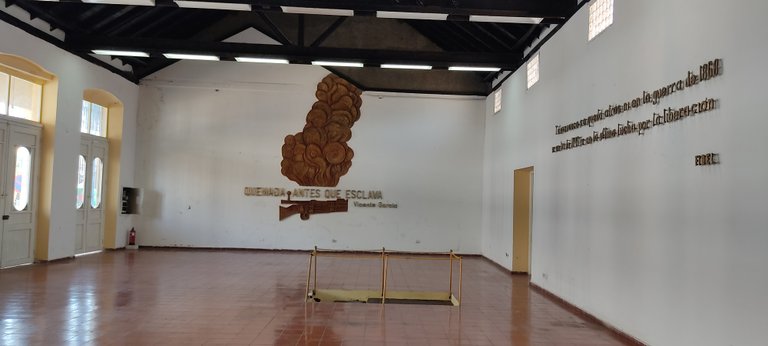
It turns out that Las Tunas has been the only province in the entire country that was burned on three occasions during the independence wars against the Spanish colony.
Wars in which Vicente García was the leader par excellence of this area of the country.
The mambises always fought to control the province, and took it on several occasions. But, when the Spanish, better armed and organized, recovered it, then General Vicente García decided to set it on fire so that the Spanish would not recover anything other than ashes.
Therefore, to set an example, he started the fire in his own house under the slogan of I prefer burned than enslaved.
On the opposite wall we can see the Cuban flag next to the city's coat of arms.
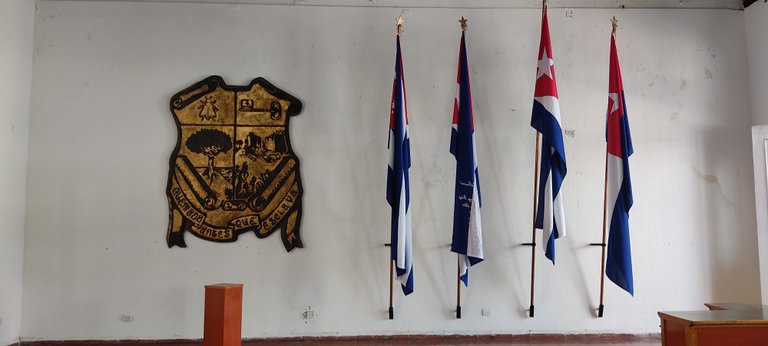
Here we see a sample of the original floor of the house. Note also that the slabs are made of clay and are still preserved, after three fires and more than 100 years of construction.
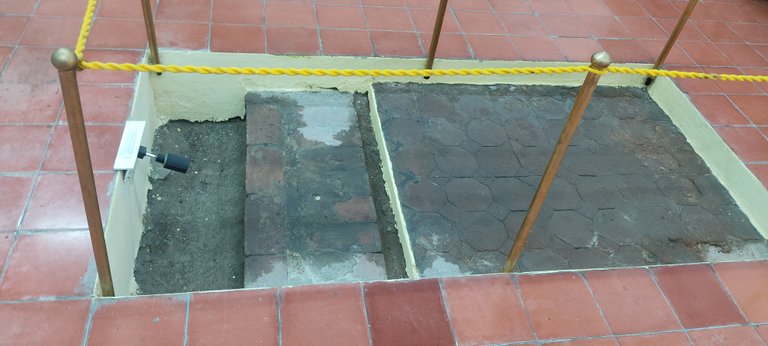
After the living room we come to this interior patio that connects two parts of the house.
This is of course a recreation of what the original house would have looked like from photographs.
Note that the furniture is made up of wooden planks as they were made in those days.
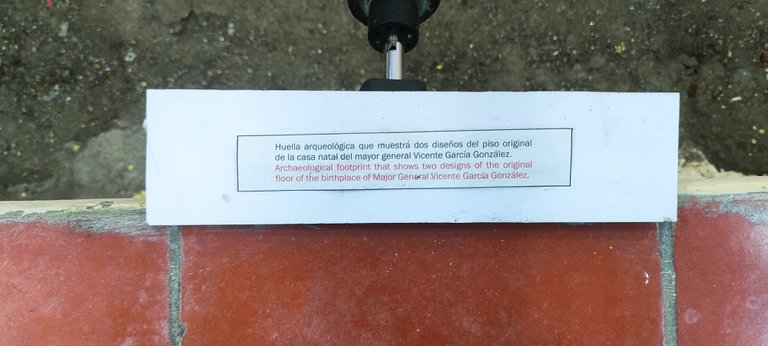
Of course, very few original parts of the house remain. However, wherever there is a window, a column, a wall, or anything, it was just as the original house was built.
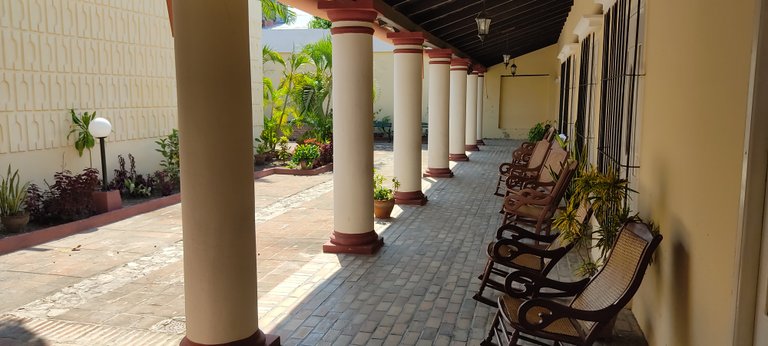
As I told you, there are very few original parts of the house, but these are some of them.
I don't know about the upper part of the window that looks faded, old. This is the only part that could be recovered.
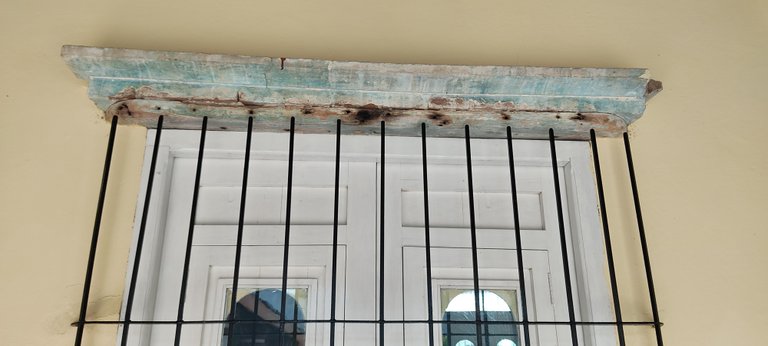
The same goes for this wooden slat. It is eaten by insects, affected by the inclement weather, but it was left there as proof of what I was saying about the house's design remaining faithful to the original.
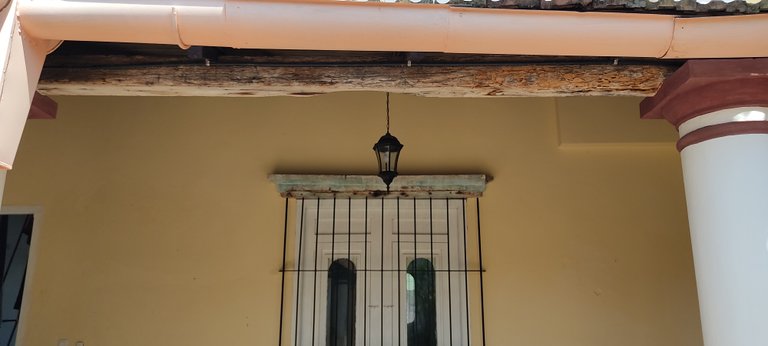
I don't know about you, but I find it incredible that this wooden trunk is still in such good condition, after more than 100 years of being cut down and used as support for this roof.
Even more so If you take into account that the house has been burned down three times along with the rest of the province, this is a surviving strip.
At least, from the last burning.
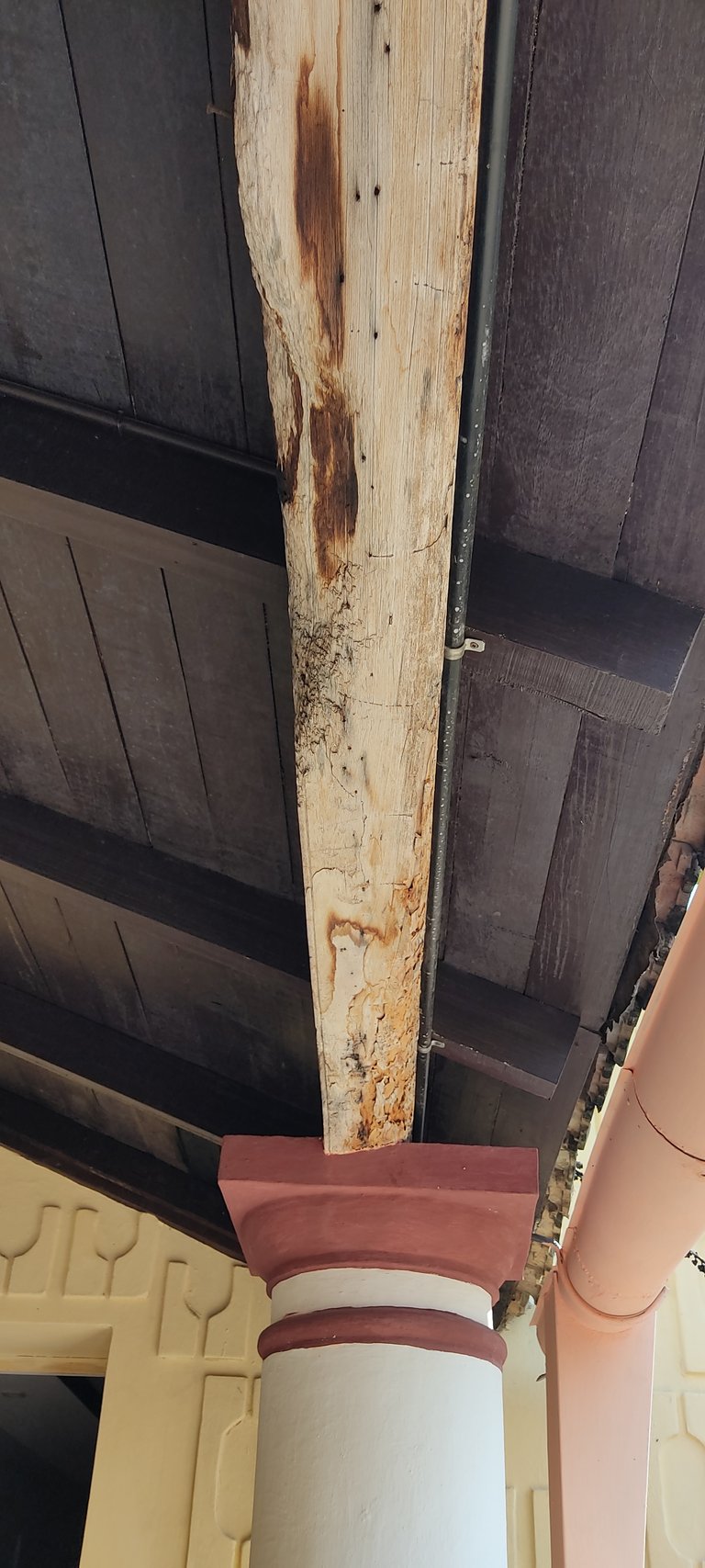
Look at what a beautiful place, imagine Vicente García's family, which consisted of a wife and five children, resting on this terrace.
What I find incredible is how the architects and designers who built this house were able to take advantage of every moment of sun and every moment of shade to give the house a freshness that avoids the need to have or use fans or climate control devices or artificial lighting.
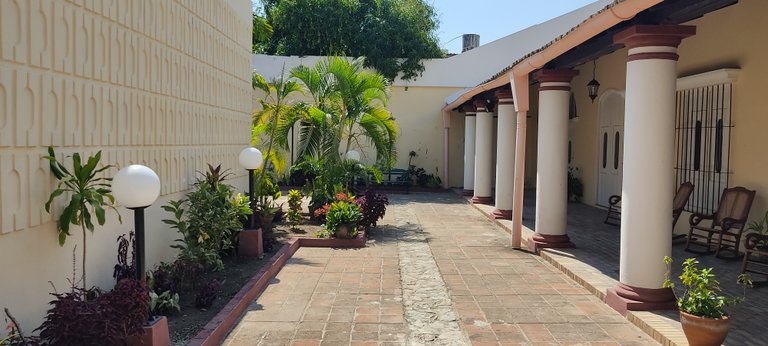
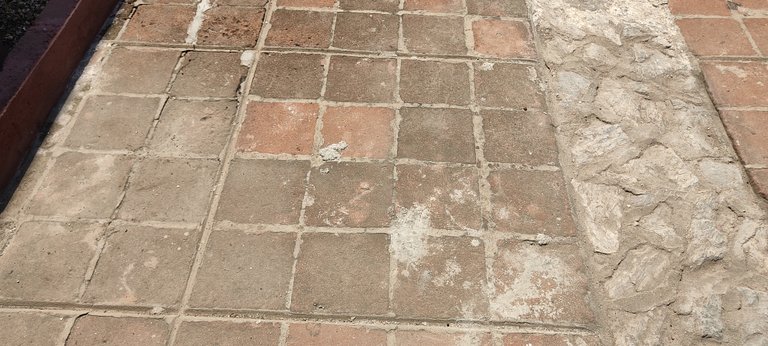
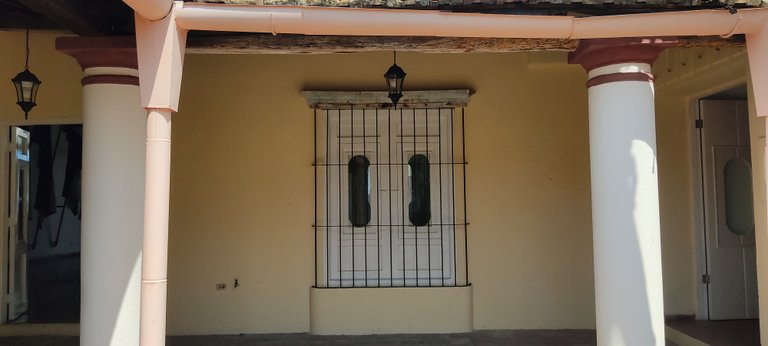
After the last restoration, this space was used as a concert hall or conference hall.
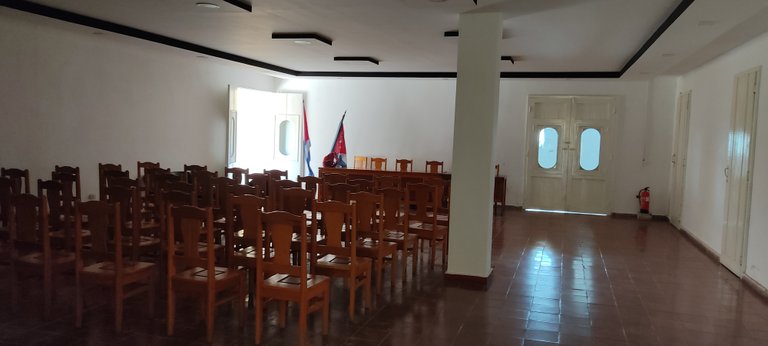
In fact, my wife @elviguitarra used it as the closing room for the First Contemporary Music Day of Las Tunas, as you can see here.
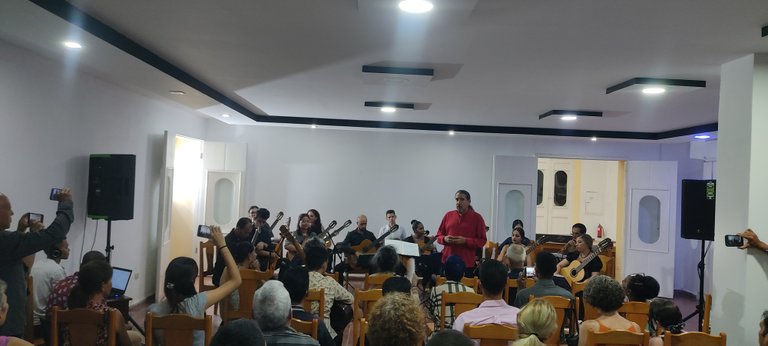
Now it is very important. This wall that you see here was where Vicente García's house was kept from other nearby houses.
When the Spanish recovered the province the last time, they wanted Vicente García to surrender. So they took his wife and family as hostages and locked them in the house. They gave them neither water nor food.
Brígida Saldívar, Vicente García's wife, had at that time four children between four and 11 years old and a newborn baby.
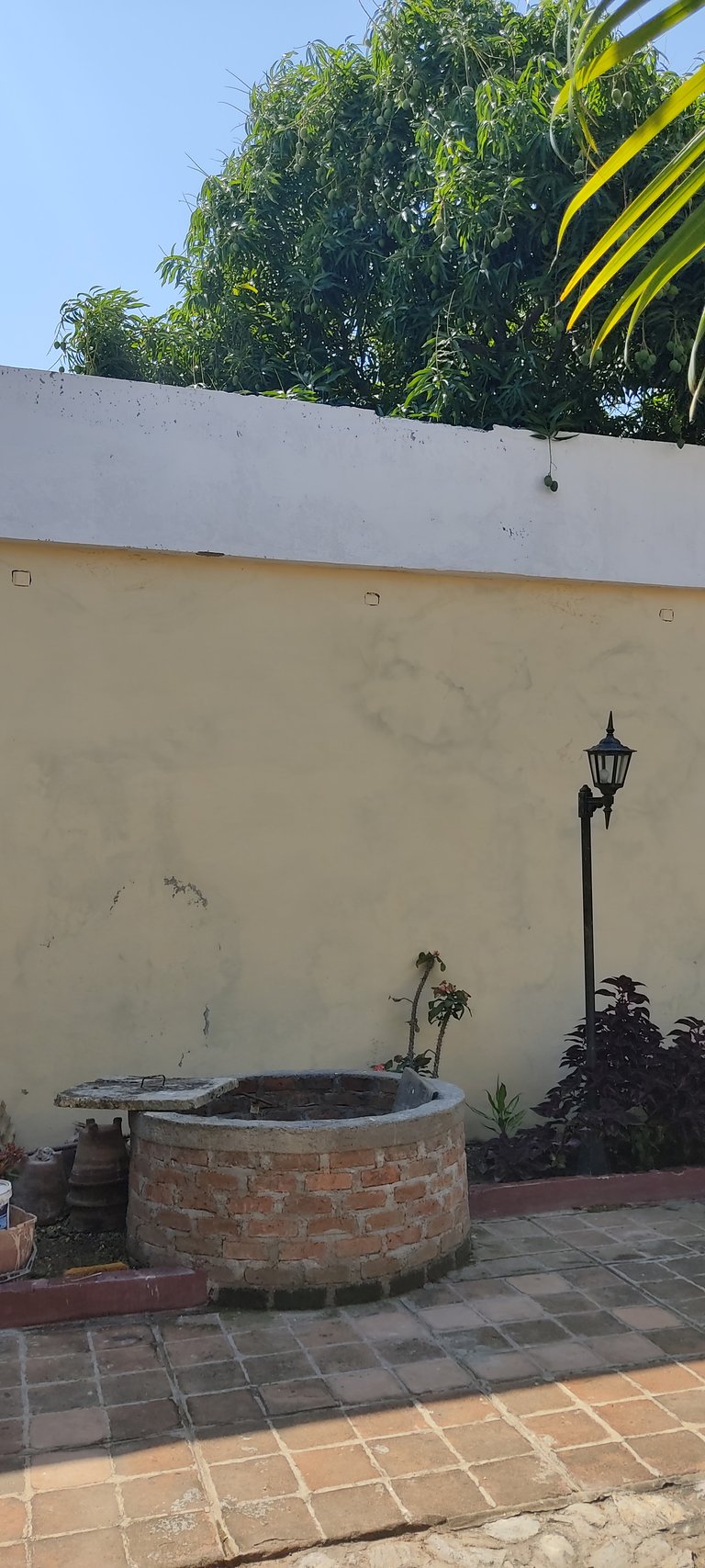
The Spanish sent Vicente a letter telling him that his wife was in that condition and that nothing would change until he surrendered. Something that the major general did not do.
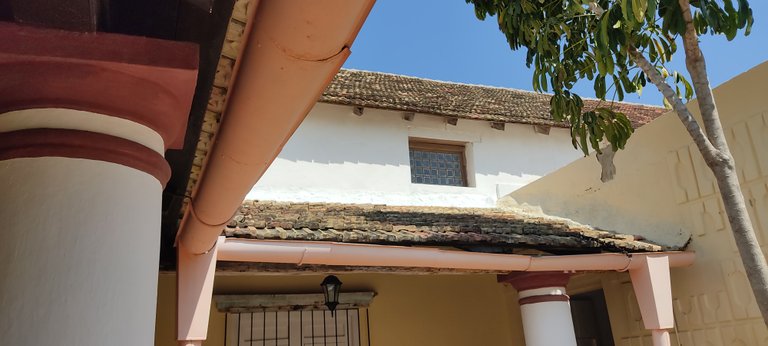
So, after more than 11 days that Brígida was in captivity without eating and only drinking water from this well, two of her five children died. Of course, the first to die was a newborn, who was buried by the neighbors inside a shoe box.
Both she and the other surviving children were left in very poor health.
Without a doubt, this house is a symbol of resistance of the people of Las Tunas. This is a house full of stories, full of moments and places that we should all know and respect.
Versión en español
Hola, #comunidad viajera!
Hoy les voy a presentar una casa hermosa. Me refiero a la antigua casa del General mmabí Vicente García.

Lamentablemente no le podremos dar la casa completa, pues las salas expositivas están cerradas por curaduría. Esa se las haré llegar en otro momento.
No obstante vamos a comenzar la visita por aquí: por el frente.
Desde primer momento vemos a esta tarja, hecha en barro de la provincia. Las tunas desconocidas como la provincia de las culturas debido a la calidad de la arcilla con la que se realiza la alfarería, que distingue a los artistas locales.

De ahí que se decidiera realizar las tarjas con este material y darle un aspecto vintage.
Este Memorial fue declarado monumento nacional por el Ministerio de cultura; lo que le le vino muy bien ya que hasta el momento estaba un estado de conservación muy malo. De hecho estuvo muchos años cerrados porque en una inspección del cuerpo de bomberos se dictaminó que, si se prendía algún fuego, el Memorial entero ardería en menos de 5 minutos.

Este Memorial ha sido partícipe de varios eventos de importancia nacional, como este que muestra la tarja ubicada en la pared exterior.

O sea estas imágenes que les voy a mostrar son las de un Memorial ya reparado completamente. Por supuesto siempre se contó con historiadores, restauradores y especialistas, para mantener el mayor grado de originalidad en la casa, ya sea en diseño como en las partes que podrían conservarse.
En el primer salón podemos observar un busto con la imagen del General Vicente García.

En la pared izquierda encontramos la escultura de una columna de humo y fuego, con el letrero que dice: Quemada antes que esclava.
¿A qué viene esta frase que sea necesario ponerla en el primer salón y a ese tamaño?

Resulta que las tunas ha sido la única provincia en todo el país que fue sido quemada en tres ocasiones durante Las guerras independentistas contra la colonia española.
Guerras en la que Vicente García fue el líder por excelencia de esta zona del país.
Los mambises siempre lucharon por controlar la provincia, y la tomaron en varias ocasiones. Pero, cuando los españoles, mejor armados y organizados, la recuperaban, entonces el general Vicente García decidía darle candela para que los españoles no recuperaran otra cosa que cenizas.
Por tanto, para dar el ejemplo, comenzaba el incendio por su propia casa bajo la consigna de la prefiero quemada antes que esclava.
En la pared opuesta podemos ver la bandera cubana junto al escudo de la ciudad.

Aquí vemos una muestra del piso original de la casa. Fíjense también que las losas están hechas con barro y aún se conservan, después de tres incendios y más de 100 años de construida.

Después del salón llegamos a este patio interior que conecta dos partes de la casa.
Esta por supuesto es una recreación de cómo se vería la casa original según fotografías.
Noten que inmobiliario está conformado por balances de madera tales como se fabricaban en aquellos tiempos.

Por supuesto, queda muy pocas partes originales de la casa. Sin embargo donde sea que hay una ventana una columna una pared cualquier cosa era tal y como fue construida la casa original.

Tal y como les dije hay muy pocas partes originales de la casa, pero estas son unas de ellas.
No sé en la parte superior de la ventana que se ve descolorida, vieja. Esta es la única parte que pudo recuperarse.

Lo mismo sucede con este listón de madera. Se encuentra comido por los insectos, afectado por las inclemencias del tiempo, pero se dejó ahí como prueba de lo que le decía de que el diseño de la casa se mantiene fiel al original.

No sé ustedes, pero a mí me parece increíble que este tronco de madera aún se mantenga muy tan buen estado, después de más de 100 años de haber sido talado y utilizado como soporte para este techo.
Más aún si se tiene en cuenta que la casa ha sido quemada en tres ocasiones junto con el resto de la provincia. Este es un listón sobreviviente.
Al menos, de la última quema.

Vean qué lugar más lindo imagínense a la familia de Vicente García que consistía en mujer y cinco hijos descansando en esta terraza.
Lo que me parece increíble es como los arquitectos y diseñadores que realizaron esta casa podían aprovechar cada momento de sol y cada momento de sombra para darle un frescor a la casa que evite la necesidad de tener o usar ventiladores o aparatos de clima o iluminación artificial.



Después de la última restauración se utilizó este espacio para usarlo como sala de conciertos o de conferencias.

De hecho mi esposa @elviguitarra la utilizó como la sala de clausura de la Primera Jornada de Música Contemporánea de Las Tunas, como pueden ver aquí.

Ahora está ya muy importante. Esta pared que ven aquí se paraba la casa de Vicente García de otras casas aledañas.
Cuando los españoles recuperaron la provincia la última vez querían que Vicente García se rindiera. Por tanto, tomaron a su mujer y a su familia como rehenes y los encerraron en la casa. No les daban ni agua ni comida.
Brígida Saldívar la esposa de Vicente García tenía en ese entonces cuatro hijos entre cuatro y 11 años y un bebé recién nacido.

Los españoles le enviaron una una carta a Vicente diciéndole que su esposa estaba en esas condiciones y que nada cambiaría nada hasta que se rindiera. Cosa que el mayor general no hizo.

Por tanto a los más de 11 días que estuvo Brígida en cautiverio sin comer solo tomaba agua de este pozo se le murieron dos de los cinco hijos. Por supuesto, que el primero en morir fue recién nacido, el cual enterraron los vecinos, dentro de una caja de zapatos.
Tanto ella, como los demás hijos sobrevivientes, quedaron en muy mal estado de salud.
Sin duda alguna esta casa es un símbolo de resistencia de los tuneros. Esta es una casa llena de historias llena de momentos y lugares que todos debemos conocer y respetar.
La historia de Cuba está llena de lugares así, hermosos y vibrantes, pero que en algún momento el deterioro les robó parte de su brillo. Es bueno ver que en estos momentos existen esfuerzos para recuperar la casa de Vicente García. Excelente post, gracias por mostrarnos ese pedacito de nuestra historia.
A very colonial style 😎 it reminds me the cultural houses that we have here in Venezuela to 💜. And well I'm waiting to see the second part about it 🤩 I know it would be interesting to 👏🏽.
Tthanks for sharing @abelarte 🥳
Cheers✨
Es que Latinoamérica fue colonizada casi toda por España. Venezuela lo fué, por tanto, compartimos cultura, arquitectura y muchas otras cosas.
Gracias por leerme y gracias por el excelente trabajo que le hiciste a mi esposa.
Te agradezco mucho tanto trabajo y tan bien hecho.
Abrazos
Yes, that's right my friend, we share a story 💜. And thank you for your kind words 🥰, I'm glad you liked it. I did my best writing her presentation, so people could know all the great talent and beautiful work that your wife offers every day 🙏🏽✨
Sii así mismo es amigo, compartimos historia 💜. Y gracias por tus lindas palabras 🥰, me contenta que te haya gustado, di lo mejor de mí para que pudiesen conocer todo el gran talento y la hermosa labor que diariamente Elvira ofrece 🙏🏽✨
Qué lugar tan especial. Se debe respirar la historia ahí . Me encantan esos espacios . Gracias por mostrarnos este sitio
Cuando vengas, ven con tiempo para que vayas a todos estos lugares y más!
Y cocines esos frijoles exquisitos
¡Hermoso sitio!
¡Gracias por el viaje!
Thank you very much for showing part of the history of the province of Las Tunas, which is the cultural heritage of all of us who love this land. Happy journey. Greetings and best regards.
Muchas gracias por mostrar parte de la historia de la provincia de Las Tunas que constituye herencia cultural de todos los que amamos esa tierra. Feliz jornada. Salud y saludos.
Gracias a ti por leer siempre. Abrazos inmensos
¡Hola @abelarte! Aquí @ninaeatshere, me paso para informarte que este post ha sido curado manualmente. Muchas gracias por publicar en la Comunidad de Worldmappin y por compartir este paseo con nosotros!
Para cualquier consulta, no dudes en comunicarte con el equipo a través de nuestro Discord hemos creado un canal en español para mayor comodidad.
¡Un saludo!
Gracias 🫂
¡Con mucho gusto!
Gracias por usar @worldmappin 😀
💪🗺️🐝
You can check out this post and your own profile on the map. Be part of the Worldmappin Community and join our Discord Channel to get in touch with other travelers, ask questions or just be updated on our latest features.